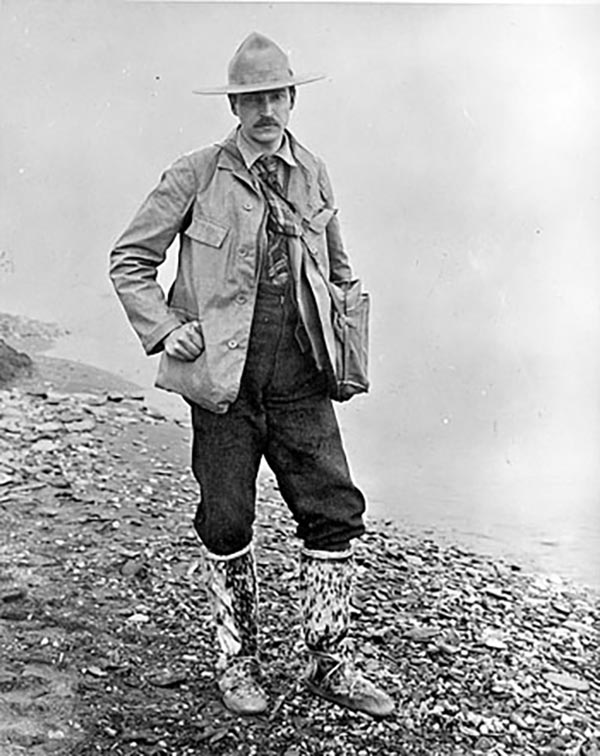
This copy is copyright protected.
Copyright © 2024 Geographicus Rare Antique Maps

Edwin Tappan Adney (July 13, 1868 – October 10, 1950) was a journalist, artist, writer, outdoorsman, and photographer active in the late 19th and early 20th centuries. Adney was born in Athens, Ohio, to a highly educated academic family. He moved around a fair bit as a child, living in Washington, Pennsylvania; Chapel Hill, North Carolina; and New York City. He expressed a natural affinity towards the arts and took classes at the Art Students League of New York. Adney also express an early affinity towards the natural world and his first major work included 110 illustrations for The Handbook of the Birds of Eastern North America. He met his wife, Minnie Bell Sharp, a Canadian of Woodstock, New Brunswick, at his mother's boarding house in New York. While visiting his wife's home in Woodstock, Adney befriend Peter Jo, a Maliseet First Nation tribesman who taught him the mechanics of constructing traditional birch-bark canoes - an art he is credited as preserving from extinction. From 1887 Adney took work as an illustrator for various New York periodicals including Harper's Weekly, Collier's Weekly, Harper's Young People, Saint Nicholas, Outing, and Our Animal Friends. It was the 1896 gold discovery on Rabbit Creek in the Klondike that, like so many young men, inspired Adney to greatness. Adney, representing Harper's Weekly immediately set out for the Klondike, arriving roughly one year later in 1897, one of the first journalists to do so. Adney, being an experienced woodsman, was particularly well-prepared for the harsh Yukon conditions. His chronicle of the Yukon Gold Rush, called the Klondike Stampede, is still in print today and is considered the definitive primary-source narrative of the event. Cartographically Adney produced only two or three maps, the most important of which were published in the Klondike Stampede. Adney's remarkable maps are noteworthy for their exceptional detail and gold rush specific annotations, all of which were based upon his own experience and travels compounded with information gathered from other miners in Dawson City. Following the Gold Rush Adney moved to Canada where he became a naturalized citizen in 1917. He also developed his career as an artist, completing a vast mural that still hangs in the lobby of the Hudson Bay Company store on Portage Avenue in Winnipeg, Manitoba. He is buried in Upper Woodstock Cemetery, Woodstock, New Brunswick, Canada.
Copyright © 2024 Geographicus Rare Antique Maps | Geographicus Rare Antique Maps

This copy is copyright protected.
Copyright © 2024 Geographicus Rare Antique Maps